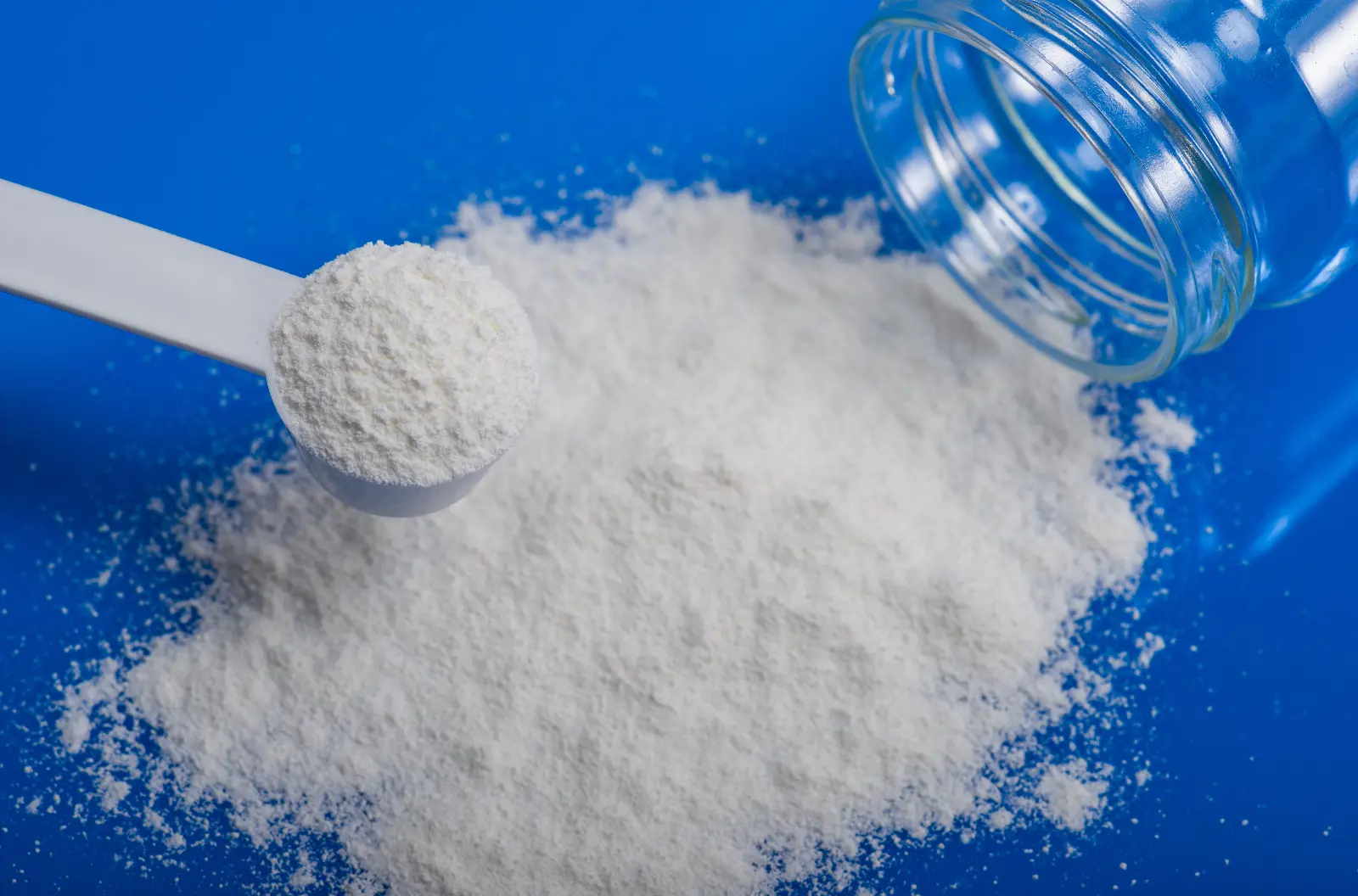Calcium Bentonite differs from Sodium Bentonite mainly in its ion content and swelling behavior. While Sodium Bentonite swells significantly when exposed to water, Calcium Bentonite swells less but has a higher ion exchange capacity. This difference is due to the presence of calcium ions in Calcium Bentonite, which replace the sodium ions found in Sodium Bentonite. This gives Calcium Bentonite a more stable structure when wet and makes it more suitable for applications that require controlled absorption and detoxification.
Calcium Bentonite originates from volcanic ash that has undergone significant geological transformations over millions of years. When a volcano erupts, it releases ash composed of fine particles rich in minerals like feldspar and volcanic glass. This ash settles into layers, typically in marine or freshwater environments, where it begins to interact with the surrounding water.
Over time, these layers of ash are buried under additional sediments, leading to compaction and slow chemical reactions. The key mineral transformation involves the breakdown of feldspar and volcanic glass into montmorillonite, the primary component of Bentonite clay. The presence of calcium ions in the water plays a crucial role in this transformation, as these ions replace other cations within the montmorillonite structure, leading to the formation of Calcium Bentonite.
This process, known as diagenesis, is slow and occurs under low-temperature conditions. It takes millions of years for the ash layers to fully convert into Calcium Bentonite, during which the clay develops its characteristic properties, such as moderate swelling, strong adsorption capabilities, and high ion exchange capacity. The specific conditions required for this formation mean that Calcium Bentonite deposits are relatively rare and are found only in certain parts of the world.
Calcium Bentonite deposits are predominantly found in regions with a history of volcanic activity, where the conditions for its formation were ideal. Some of the most significant deposits include:
United States: The United States is home to some of the largest and most accessible deposits of Calcium Bentonite, particularly in states like Texas, Mississippi, and Alabama. These regions were once the sites of ancient volcanic activity, where ash settled in large sedimentary basins. Over time, these basins became rich sources of high-quality Calcium Bentonite.
Asia: India and China also host significant reserves of Calcium Bentonite. In India, for example, the deposits are primarily found in the western part of the country, where ancient volcanic activity contributed to the formation of this valuable clay. These regions are known for producing Calcium Bentonite with specific properties that are highly sought after in the global market.
Australia: Australia’s unique geological history has led to the formation of Calcium Bentonite in certain regions. The clay found here is often used in applications requiring high purity and specific chemical characteristics.
Calcium Bentonite is a naturally occurring clay, primarily composed of montmorillonite, which gives it its unique physical and chemical characteristics. It typically appears in colors ranging from light gray to pale green, depending on the specific mineral impurities present.
Texture: Calcium Bentonite has a fine-grained structure, making it soft and easy to mold.
Swelling Capacity: It can absorb water, leading to moderate swelling. This swelling capacity is notable, though less pronounced than that of Sodium Bentonite.
Consistency: Upon absorbing water, Calcium Bentonite forms a gel-like consistency, which is useful in various applications such as drilling fluids and sealants.
Ion Composition: Calcium Bentonite is rich in calcium ions, which dominate its exchangeable cation content. This high calcium content is responsible for its specific ion exchange capabilities.
pH Level: Typically, the pH level of Calcium Bentonite ranges between 8.5 to 10, making it slightly alkaline.
Absorption Rate: Calcium Bentonite has a significant ability to absorb impurities, heavy metals, and toxins, making it valuable in both industrial and environmental applications.
Swelling Capacity: Sodium Bentonite exhibits a much higher swelling capacity than Calcium Bentonite, expanding several times its dry volume when exposed to water. In contrast, Calcium Bentonite swells less but still forms a stable gel.
Absorption and Adsorption: Sodium Bentonite is more absorbent, particularly in retaining water, which makes it ideal for use in industries requiring significant swelling. Calcium Bentonite, on the other hand, has better adsorption properties, particularly for absorbing oils and heavy metals.
Ion Exchange: Calcium Bentonite primarily exchanges calcium ions, while Sodium Bentonite exchanges sodium ions. This difference affects their behavior in various applications. For instance, Calcium Bentonite is often preferred in situations where less swelling is needed, but strong adsorption properties are required.
In the construction and civil engineering sectors, Calcium Bentonite is commonly used as a sealant material. Its ability to absorb water and swell moderately makes it ideal for creating barriers against water seepage in construction projects. It is often used in lining ponds, landfills, and canals to prevent water leakage. Additionally, Calcium Bentonite is used in geotechnical engineering as a key component in slurry walls, where it helps in controlling groundwater flow and providing structural stability.
Calcium Bentonite is widely used in water purification processes due to its excellent adsorption properties. It can effectively remove impurities, heavy metals, and organic contaminants from water. In wastewater treatment plants, Calcium Bentonite is used as a flocculant to aggregate suspended particles, making them easier to filter out. Its natural ability to bind with toxins and other harmful substances makes it an essential material for ensuring clean and safe water.
In agriculture, Calcium Bentonite is valued for its ability to improve soil structure and fertility. When applied to soil, it enhances water retention, aeration, and nutrient availability. Calcium Bentonite also acts as a slow-release agent for fertilizers, ensuring that nutrients are gradually made available to plants over time. This improves crop yield and reduces the need for frequent fertilizer application.
Calcium Bentonite is commonly added to animal feed as a detoxifying agent. Its strong adsorption properties allow it to bind with mycotoxins, heavy metals, and other harmful substances present in feed, reducing their toxicity and preventing them from being absorbed by the animals. This not only improves the overall health of livestock but also enhances the quality of the produce, such as milk, meat, and eggs.
Calcium Bentonite is a popular ingredient in skincare products, particularly in face masks and creams. Its ability to absorb excess oil, toxins, and impurities from the skin makes it an effective cleansing agent. When applied as a face mask, Calcium Bentonite helps to unclog pores, reduce acne, and improve skin tone. It is also used in creams and lotions for its soothing and healing properties, making it suitable for treating minor skin irritations and conditions.
The detoxifying properties of Calcium Bentonite are widely recognized in the personal care industry. It is used in various body care products to cleanse and purify the skin, drawing out toxins and impurities. Calcium Bentonite is also used in detoxifying baths and body wraps, where it helps to remove toxins through the skin, leaving it refreshed and rejuvenated.
In the pharmaceutical industry, Calcium Bentonite is used as an excipient in tablet formulations. Its binding properties help in holding the ingredients of the tablet together, ensuring proper dosage and efficacy. Additionally, Calcium Bentonite is used in medicinal products for its detoxifying properties. It can bind with toxins and harmful substances in the gastrointestinal tract, preventing their absorption into the body and aiding in their elimination.
Detoxification: Calcium Bentonite is effective at detoxifying the skin by absorbing oils, toxins, and impurities. This helps in reducing acne and promoting clearer pores.
Exfoliation: It gently exfoliates the skin, contributing to a smoother texture and a more even complexion.
Soothing Effect: The clay’s natural soothing properties make it suitable for treating minor skin irritations, such as rashes and insect bites. It provides relief and helps in calming inflamed skin.
Enhanced Water Retention: When added to soil, Calcium Bentonite improves water retention, ensuring that plants have a consistent supply of moisture. Nutrient Availability: It enhances the availability of nutrients in the soil, leading to healthier plant growth and reducing the need for chemical fertilizers. Sustainability: By improving soil structure, Calcium Bentonite supports sustainable farming practices and contributes to long-term soil health. Drilling Mud Additive: Calcium Bentonite is a key component in drilling mud, where it stabilizes boreholes and controls fluid loss. Lubrication: It provides lubrication to the drill bit, reducing friction and preventing overheating during drilling operations. Sealant: Calcium Bentonite is used as a sealant in construction projects, such as lining ponds, landfills, and slurry walls, to prevent water leakage. Structural Stability: It plays a critical role in geotechnical engineering, helping to manage groundwater flow and maintain structural integrity in construction projects. Preparation: Mix 1-2 tablespoons of Calcium Bentonite clay with enough water or apple cider vinegar to create a smooth paste.
Application: Apply the paste evenly to the face, avoiding the eye area. Leave it on for 10-15 minutes until it starts to dry.
Rinsing: Rinse off the mask with warm water and pat the skin dry. Follow with a moisturizer to hydrate the skin.
Preparation: Combine Calcium Bentonite clay with water or herbal infusions to form a thick paste.
Application: Apply the paste to the body, focusing on areas with excess toxins or cellulite. Wrap the body in a warm towel or plastic wrap to enhance absorption.
Duration: Leave the wrap on for 20-30 minutes before rinsing off in the shower.
Preparation: Add 1/2 to 1 cup of Calcium Bentonite clay to warm bath water.
Soaking: Soak in the bath for 15-20 minutes to allow the clay to draw out impurities and soothe the skin.
Application: Sprinkle Calcium Bentonite evenly over the soil surface. For best results, use 5-10 pounds per 100 square feet of garden or field.
Incorporation: Till or mix the clay into the top 6 inches of soil to improve water retention and nutrient availability.
Incorporation: Add Calcium Bentonite to animal feed at a rate of 1-2% of the total feed weight. This helps to detoxify the feed by binding to harmful toxins and improving the overall health of livestock.
Mixing: Ensure thorough mixing to distribute the clay evenly throughout the feed.
Dosage: Add Calcium Bentonite to the water at a rate of 0.1-0.5% of the total volume, depending on the level of contamination.
Mixing: Stir the water vigorously to allow the clay to interact with suspended particles. Let it settle for 30-60 minutes, then filter out the aggregated particles to purify the water.
Patch Test: Always perform a patch test before using Calcium Bentonite on the skin. Apply a small amount of the prepared mask or paste to a small area of the skin, such as the wrist, and wait for 24 hours to check for any adverse reactions.
Frequency: Use Calcium Bentonite masks no more than 1-2 times per week to avoid over-drying the skin.
Consultation: If considering internal use of Calcium Bentonite, consult with a healthcare provider to determine the appropriate dosage and ensure it is safe for your specific needs.
Quantity: Apply Calcium Bentonite at recommended rates (5-10 pounds per 100 square feet) to avoid over-application, which could lead to soil compaction.
Safety: Ensure that the clay used for agricultural purposes is free from contaminants and safe for use in food production.
Dosage: Stick to the recommended dosage (1-2% of total feed weight) to prevent nutrient imbalances or potential toxicity in livestock.
Monitoring: Regularly monitor the health of animals and adjust the dosage as needed based on their specific dietary requirements and health conditions.
Gloves: Wear protective gloves to prevent direct skin contact with Calcium Bentonite, especially if handling large quantities.
Dust Mask: Use a dust mask or respirator when handling dry Calcium Bentonite powder to avoid inhaling fine particles, which can irritate the respiratory system.
Eye Protection: Wear safety goggles to protect your eyes from dust or accidental splashes when mixing the clay with liquids.
Ventilation: Ensure the workspace is well-ventilated to minimize the concentration of dust in the air. If possible, work in an area with good airflow or use local exhaust ventilation.
Handling Techniques: Gently scoop or pour the powder to reduce the amount of airborne dust. Avoid using forceful methods that could create dust clouds.
Dry Spills: For dry spills, carefully sweep up the material using a soft-bristle broom and dispose of it in a sealed container. Avoid generating dust during cleanup.
Wet Spills: For wet spills, use absorbent materials like sand or sawdust to soak up the liquid, then sweep and dispose of the waste appropriately.
Dry Conditions: Store Calcium Bentonite in a dry, cool environment away from moisture. Exposure to humidity can cause the clay to clump and lose its effectiveness.
Temperature Control: Keep the storage area at a stable temperature, avoiding extreme heat or cold that could degrade the quality of the clay.
Sealed Containers: Always store Calcium Bentonite in tightly sealed containers to prevent contamination from dust, dirt, or other foreign materials.
Labeling: Clearly label storage containers with the product name, date of storage, and any relevant handling precautions. This ensures proper identification and safe use.
Separation from Chemicals: Store Calcium Bentonite away from reactive chemicals such as acids or strong alkalis, as these could alter its properties or cause unwanted reactions.
Skin Contact: While Calcium Bentonite is generally safe for topical use, prolonged or repeated skin contact may cause irritation or dryness, especially in individuals with sensitive skin. It is advisable to wash hands thoroughly after handling and apply moisturizer if necessary.
Eye Contact: Accidental contact with eyes can lead to irritation, redness, or discomfort. In case of contact, rinse the eyes immediately with plenty of water and seek medical attention if irritation persists.
Respiratory Irritation: Inhaling dust from Calcium Bentonite powder can irritate the respiratory tract, leading to symptoms such as coughing, sneezing, or a sore throat. Individuals with pre-existing respiratory conditions, such as asthma, should take extra precautions to avoid inhalation.
Prevention: To minimize inhalation risks, always use appropriate respiratory protection and handle the material in well-ventilated areas.
Accidental Ingestion: Ingesting small amounts of Calcium Bentonite is generally considered safe, as it is sometimes used internally for detoxification purposes. However, consuming large quantities can lead to gastrointestinal discomfort, including constipation or bloating.
Safety Measures: Keep Calcium Bentonite out of reach of children and pets to prevent accidental ingestion. If ingestion occurs and adverse symptoms develop, seek medical advice.
Waste Disposal: Dispose of Calcium Bentonite waste responsibly, following local regulations for disposal of non-hazardous materials. Avoid releasing large amounts into the environment, as excessive accumulation in soil or water could disrupt natural processes.
Biodegradability: Calcium Bentonite is a naturally occurring mineral and is generally considered environmentally friendly. However, care should be taken to prevent unnecessary contamination of water bodies or agricultural land.
Calcium Bentonite is a versatile and valuable mineral with a wide range of applications across various industries, including skincare, agriculture, water treatment, and construction. Its natural properties, such as absorption, detoxification, and ion exchange, make it an essential component in many processes. However, proper handling and storage are crucial to maintaining its effectiveness and ensuring safety. By following recommended guidelines and precautions, you can maximize the benefits of Calcium Bentonite while minimizing potential risks. Whether used in personal care products, agricultural practices, or industrial applications, Calcium Bentonite offers a safe and effective solution that contributes to both health and environmental well-being.





